Some trips are planned out out months or even years in advance. Phone calls, maps, gear needs, reservations, research, and countless hours traveling a virtual path in Google Earth typically come before these arduously strategical undertakings. This was not one of those trips.
Originally, Angela and I planned to go camping with friends for spring break, but plans changed and I was unexpectedly faced with a few free days on my own. I seized the opportunity and quickly threw together a solo cycling adventure. The basic plan was to bike from New Orleans, LA to Venice, LA – the end of the road, rest my legs somewhere overnight, and then bike back up to New Orleans the next day. My path consisted of various river roads and highways that hugged the Mississippi River all the way down. The minimal amount of planning involved for this journey generated a few black and white maps and a vague lead on a place to sleep. Ready or not, I loaded down my bike and backpack with as much as I felt comfortable carrying, and the trek was underway.
The distance from New Orleans to Venice is about 80 or 90 miles depending on which roads one takes. The night before the trip, I had trouble sleeping. My mind raced with questions about the next two days, traveling to a new place for the first time. What would I find out there on the road? What kind of people would I meet along the way? Where would I sleep? Will I run into any trouble? This being the longest ride I’ve ever attempted, would I have the strength to bike back on day two? I didn’t have an extensive plan of action, but I knew that with questions like these, I was probably on the right course.

Google Earth map depicting Southeast Louisiana
Day one begins in the Bywater neighborhood of New Orleans, just east of the historic French Quarter. I started early, 7:00 AM, crossed the Industrial Canal bridge, pedaled through the Lower 9th Ward, through Arabie, and before I knew it I was in the country. With the rising sun’s earliest golden rays just touching the treetops, I pull into the Chalmette Battlefield.

The road leading into the Chalmette Battlefield
It was on this site, on January 8, 1815, that General Andrew Jackson led his troops to the greatest American land victory in the War of 1812. This was the last battle of the last war between England and the US, and Jackson’s men totally dominated the british forces. About 5,000 militia and volunteers, including the Baratarians of Jean Lafitte, defended New Orleans against about 5,400 men led by Major General Sir Edward M. Pekenham, commander of the British Army at Chalmette. By the end of what is now called the Battle of New Orleans, British casualties exceeded 2,000 while Americans reported only 13. Andrew Jackson enjoyed fame and the status of a hero after this victory and served as president of the United States from 1829-1837.
Chalmette Battlefield. Pictured below you can still see the mud rampart build by Jackson’s militia now fortified by a wooden wall, recreations of the cannon’s used in battle, and the Malus-Beauregard house on the Mississippi River levee. The blue cannons represent 6-pounders and the cannon at far right was the largest American cannon on the field, a 32-pounder. The Malus-Beauregard house was erected around 1833, 18 years after the Battle of New Orleans, and was named after its last owner, Judge Rene Beauregard.

A representative of the National Park stuck his head out of the visitor’s center trailer, and we exchanged morning greetings. I circled around the towering Chalmette Monument and read the placard before it.
Chalmette Monument
This monument honoring the American victory at Chalmette was proposed by Andrew Jackson in 1840. Work began on a 200 foot obelisk in 1856, but soon halted due to a lack of money. Construction began again in 1894 when the Louisiana Legislature gave control of the monument to the United States Daughters of 1776 and 1812.
A reduced height was necessary for stability, and the 100 foot, 2-1/2 inch monument was completed by the Daughters in 1908 with financial help from the Federal Government.
The Chalmette National Cemetery, on these same grounds, was established in May of 1864. Residents of the cemetery include veteran soldiers from the Civil War, Spanish-American War, World War I, World War II, Vietnam, and 4 Americans who fought in the War of 1812, only one of which fought on the grounds in Chalmette. The cemetery was seriously impacted by Hurricane Katrina. Headstones struck by falling trees, toppled and crumbled into manageable chunks, and preservationists are currently working to piece together this national treasure. Chris Kirkham wrote an article for the New Orleans Times Picayune on February 16th, 2009 describing the recovery efforts. “Storm surges from Hurricanes Katrina and Rita had toppled sections of a historic red-brick wall lining the site, 140-year-old gravestones lay in pieces and soldiers’ bones had surfaced from below.” Pishny Restoration Services are tying together the headstones with a steel rod and then patching them, all done with the end goal of historical accuracy in mind. The intention is to make the cemetery look exactly as it did before the storms. This section of the park was closed to pedestrians, so I’ll have to revisit the site when the project is completed.

Two cows sitting in a field in Meraux, LA. Notice the cow in the foreground has a rather large gash in its belly.

Grove/alley of oaks in Meraux, LA along Hwy 46.
Fifteen miles downstream from New Orleans, an amazing thing is happening, and it’s called the Caernarvon Freshwater Diversion Project. In the official project “fact sheet”, the Army Corps of Engineers states:
The project diverts fresh water and its accompanying nutrients and sediments from the Mississippi River to coastal bays and marshes in Breton Sound for fish and wildlife enhancement. Benefits include restoration of former ecological conditions by controlling salinity and supplementing nutrients and sediments. The bays are important to oyster production and as breeding areas for shrimp and food fishes, while the marsh areas produce food for fur-bearing animals, alligators, and migratory waterfowl. A total of 16,000 acres of marshland will be preserved and 77,000 acres of marshes and bays will be benefited by the project. The diversion takes place under regulated conditions developed from monitoring the impact on the environment and the fish and wildlife. Deterioration of the marshes below New Orleans has long been recognized. This deterioration stems from factors such as subsidence, erosion, and saltwater intrusion. The introduction of fresh water and alluviums from the Mississippi River, via the control structure, will serve to reduce this degenerating trend in the local area. The project will benefit existing commercial fisheries by enhancing marsh conditions, thereby improving the fish and wildlife resources of the area. The total average annual benefits include $8,706,000 for fish and wildlife and $449,000 for recreation, totaling $9,155,000.
On the day of my big bike ride, only one duck was splashing around in the waters of Caernarvon. The pelican photos below were taken a month prior at the same point, where the Caernarvon Freshwater Diversion crosses underneath Hwy 39 and works its way towards Breton Sound.

The Caernarvon Freshwater Diversion
American White Pelicans feeding in the Caernarvon Diversion. Note the small orange horn on some of the pelicans’ bills. This protrusion forms during mating season and falls off some time after.

I discovered that chasing nutria rats with a camera can make for an amusing diversion. The nutria pictured below was busy building some kind of embankment near a canal when I startled it. I also stumbled upon a family of nutria ranging in size from tiny (about the size of a tennis ball) to remarkably giant (think small bear). The largest nutria, incredibly nimble for its girth, resembled olympic swimmer Michael Phelps as it leapt from the path and dove into the canal, quicker than I could fire off a shot with my Nikon.
 Plaquemines Flag While one deckhand topped off the boat’s fresh water supply, I spoke to the other deckhand about the large colorful flag on the bow. He explained that this was the official flag of Plaquemines Parish and that each color represented one of the local high schools. I dug a little deeper and found a conflicting view at the website Flags of the World:
Plaquemines Flag While one deckhand topped off the boat’s fresh water supply, I spoke to the other deckhand about the large colorful flag on the bow. He explained that this was the official flag of Plaquemines Parish and that each color represented one of the local high schools. I dug a little deeper and found a conflicting view at the website Flags of the World:
The official parish flag was raised for the first time on June 14, 1978 over the Judge L. H. Perez Memorial Park. The banner had been designed by E. Montgomery, a community resident, who had entered a contest held parish wide that was held by local officials. Each color in the flag was designated to represent a virtue of the parish. A green triangle represents the color of growth in the delta. A white border designating purity separates the green of the delta from the three broad bars of red, golden yellow and blue – symbolic of courage, honor and piety respectively.
In Homepleace, LA I came across a shrine to Our Lady of Fatima. Here is some background on that story:
In 1917, through a miracle accepted by the Catholic Church, it is believed that the Virgin Mary appeared to three children (Lucia Santos and siblings Jacinta and Francisco Marto) in Fatima, Portugal. She first appeared to the children on May 13, 1917, and the visits continued regularly for the next five months, always on the 13th day. The “Lady” urged the children to live holy lives and shared secrets with them which would later be called the “Three Secrets of Fatima”. The first secret was a terrifying vision of Hell on Earth, the second secret included instructions on how to save sinners from that Hell, and the third secret revealed the deaths of a pope and other associates of the Catholic Church. Drawn to the holy location, now called Cova da Iria, 100,000 believers, skeptics, and bystanders witnessed the last appearance on October 13th of the same year. On that day the “Lady” performed what is now known as the “Miracle of the Sun”.
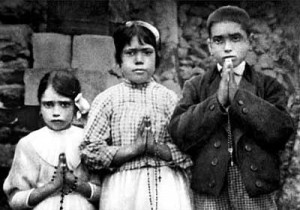 According to many witness statements, after a downfall of rain, the dark clouds broke and the sun appeared as an opaque, spinning disk in the sky. It was said to be significantly less bright than normal, and cast multicolored lights across the landscape, the shadows on the landscape, the people, and the surrounding clouds. The sun was then reported to have careened towards the earth in a zigzag pattern, frightening some of those present who thought it meant the end of the world. Some witnesses reported that their previously wet clothes became “suddenly and completely dry.” – De Marchi, John (1952b). The Immaculate Heart. New York: Farrar, Straus and Young.
According to many witness statements, after a downfall of rain, the dark clouds broke and the sun appeared as an opaque, spinning disk in the sky. It was said to be significantly less bright than normal, and cast multicolored lights across the landscape, the shadows on the landscape, the people, and the surrounding clouds. The sun was then reported to have careened towards the earth in a zigzag pattern, frightening some of those present who thought it meant the end of the world. Some witnesses reported that their previously wet clothes became “suddenly and completely dry.” – De Marchi, John (1952b). The Immaculate Heart. New York: Farrar, Straus and Young.
Shrine of Our Lady of Fatima. This shrine appears across the street from the St. Patrick Catholic Church in Homeplace, LA. In researching the shrine I found images, less than a year old, that show the shrine unpainted with the surrounding shrubbery lifeless. Today the shrine is a vibrant and beautifully colored memorial to one of the Catholic Church’s many amazing mysteries.
I’ll be honest, I didn’t know what this shrine was when I biked up to it. I had no idea that the construction and layout of the characters was intentional, but now after some investigation I see that the shrine clearly depicts the three children of Fatima praying to the Blessed Virgin Mary. This raises some questions. Why is this shrine here in Homeplace, LA? It seems to me that the miracles witnessed in 1917 are very far removed from Plaquemines Parish, so why place it here on this tiny half-mile-wide sliver of land bordered by the Mississippi River to the northeast and marsh to the southwest? I feel like the metaphysical weight of the Fatima phenomenon represented in this shrine is too heavy for these grounds and will one day be swallowed up like an old shotgun house built atop soft soil. Maybe I’m making too much of this idol. Perhaps it will become a pilgrimage destination. It was for me, and I didn’t even know it!
• • • •
Passing through Port Sulphur and then Homeplace, I was stopped several times by Plaquemines Parish cops. Three young boys had just robbed a gas station down the river, and the police were looking for them. I saw cops stopping vehicles at a road block, going door to door to ask if folks had observed any suspicious behavior, and of course stopping the strange fellow on the bicycle to ask where he had been, where he was coming from, and then following with questions aimed at figuring out what was wrong with him for riding such a long distance on a bike.
In Homeplace, while attempting to make a panoramic photograph by the river (see image below), a mysterious Crown Victoria crept along the levee, down the river side, and pulled up to my bike. The jet-black windows lowered to reveal a wrinkled man with a cigarette clinging to his bottom lip. I got the feeling that he decided to talk to me before thinking through his words. “I AM A POLICE,” he blurted, which is the equivalent of me walking into the school where I work and declaring, “I AM A TEACH!” The aged officer looked me up and down and after a bit of pondering gave me the head nod of approval. “You seen anything suspicious around here?” I wanted to say that I’d seen a live cow in Meraux with its guts pouring out of a rip in its side, but I simply said, “No, I’ve been riding since before Port Sulphur. I haven’t seen anything out of the ordinary.” The conversation turned to my trip, as it did with all the cops that stopped me, and whether or not I was alright in the head. The old man couldn’t believe that I had pedaled from New Orleans to Homeplace on a bike. I attempted to explain that it was a hybrid/road bike and that I could work up a pretty good head of steam, but before I could finish my side of the story he cut me off, “Well, call the sheriff is you see anything. I’m gunna keep on lookin’.”

This is a 360° panoramic of the Mississippi River in Homeplace, LA (mile 61). Notice the cop car on the levee.
Below is another panoramic photograph. It was taken on a bridge that crosses the Doullut Canal in Empire, LA (mile 69). There’s a small but busy marina below, and a view of Adams Bay to the southwest.
Here stands a new water tower in Buras. One of the town’s towers fell during Hurricane Katrina. This may be its replacement.
Biking through Buras, I did a double take, squeezed my brakes, and made a u-turn when I saw the “Faith Temple Ministries” church (mile 77). On first glance, you might think that this oddly shaped building is like a giant tent, but the outer material is quite solid. I parked my bike between the church and what appeared to be mobile homes set up as temporary housing for the missionaries. Several young men and women were cooking out on the makeshift boardwalk between the mobile homes, and one of the women came out to greet me. She very kindly invited me to take photographs, tour the inside of the church, and she told me a little about the building. She said that the rare construction of the Faith Temple Ministries church was called “spring structure”, and that there were only a handful in the entire country.
At about 3:30 PM I pulled into Fort Jackson (mile 79). Fort Jackson is a decommissioned fortification, requested by and named for Andrew Jackson after the War of 1812. It was the site of the Battle of Forts Jackson and St. Philip from April 18-28, 1862, but I’ll talk more about that later when I return to Fort Jackson after dark.
Scenes from Fort Jackson:
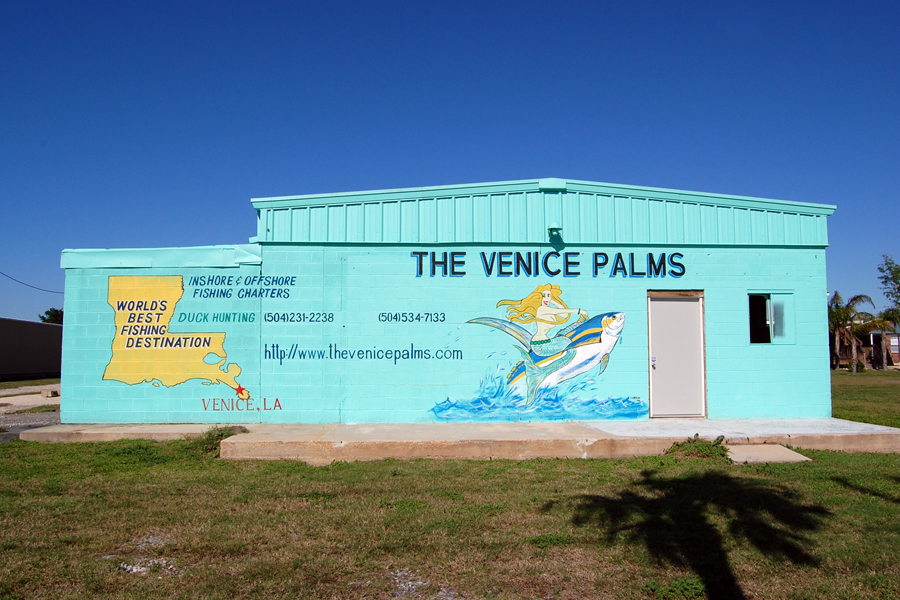
Venice Palms Inshore and Offshore Fishing Charter. The image cracks me up - mermaid on a fish. Come on.
Riding down Tidewater Road, the southernmost public road in Plaquemines, I stopped to talk to these fishermen. The two men were members of a construction crew working in Buras that had just finished work for the day. The man on the left reported that he spotted me biking much earlier in the day, and joked with his friend, “40 more miles to go and we’ll see him in Venice!” Never actually expecting to see me again, they were quite surprised when I pulled up on my bike. As we got to talking the fellow on the right pulled in a catfish.
The next day, on my ride back home, I ran into the men again, this time in Buras. It was early and they were setting up equipment for the day. As I rolled down the quite back-road in Buras, the man on the right yelled out, “On your way back to New Orleans?” I concurred. “Alright, well be careful out there!”
Deeper down Tidewater Road, I was flagged by two Latino men. One of them pointed down at his catch and said in very broken English, “Hey man, you know fish?” I looked down at my feet where I hadn’t even realized that I was nearly standing on a garfish. I said, “That’s a garfish.” He looked at his friend and back at me, “Good to eat?” I’ve never had gar, but I know that people eat it. Hell, people eat everything down here. I said, “I think so. Try it out!” They thanked me and I continued down the road.
Finally after 93 miles and ten hours of pedaling, I came to the very end of the road. To my surprise, there was a sign marking the terminus, “WELCOME – YOU HAVE REACHED THE SOUTHERNMOST POINT IN LOUISIANA – GATEWAY TO THE GULF.” Aside from the fact that I was not truly at the most southern point in Louisiana, it was oddly satisfying to see this sign, like a reward for all my hard work.
Cypress Trees – Venice
Lift barge (left); Spider lily (right)
There are surprisingly few places to eat down at the end of Louisiana, and with my hunger level verging on “hangry”, that’s hungry plus angry, it was imperative that I locate food. It took quite a bit of searching and asking around, but after overcoming some of the worst directions I’ve ever received in a town with one road, I finally found myself at the Riverside Restaurant. While I spent a little more than I typically would on a plate of food, $23 with tip, I did get a huge helping of the best catfish I’ve ever had. The batter was light, flaky, and seasoned just right. The fish was piping hot, fresh, and perfect. The waitstaff, probably accustomed to dealing with salty sea dogs, was young and a bit curt for my taste – menu, plate, bill, no frills, no small talk, just excellent catfish.
After devouring the fish I started the slightly less thrilling leg of the trip, back up the river towards New Orleans.
Earlier in the day I stopped in at three different RV parks between Empire and Venice, and at each I was greeted with the same reception, “We’re not set up for tent camping. You should check out Fort Jackson up the road.” In all three situations I attempted to explain that I didn’t need facilities or hook-ups, just a patch of grass, but all three RV park representatives turned a cold shoulder and sent me on my way. It should be noted that all three places had lots and lots of grass. Nonetheless, I pressed on, 10 miles back up the river to Fort Jackson. By the time I got there it was dark, very dark.
A little history on Fort Jackson: As I said before, Fort Jackson is a decommissioned fortification, requested by and named for Andrew Jackson after the War of 1812. The purpose of the stronghold was to defend New Orleans from enemy encroachment via the Mississippi River. From April 18-28, 1862 Fort Jackson and Fort St. Philip, almost directly across the river, were host to a major Civil War battle. During this crushing maneuver the Federal forces successfully navigated up the river and through the two forts. In an exchange of mortar, the Federal forces lost only one ship while the Confederates’ entire fleet was destroyed. Federal forces subsequently took the city of New Orleans. Confederate soldiers, disheartened by the shocking blow, mutinied and Fort Jackson was sacked. No one knows the exact number of casualties from this battle, but when the smoke cleared it is believed that approximately 37 Federal soldiers and over 700 Confederate soldiers met their fate at Forts Jackson and St. Philip. Some died manning stations on land. Others met a watery fate, swallowed by the Mississippi.
I rolled onto the pitch black grounds, exhausted from 111 miles of pedaling. All I wanted to do was set up my tent and sleep, but it wasn’t that simple. I had to find the “campsite”. Jackson is a star-shaped fort, a design whose origins date back to mid-15th century Italy. In addition, there is an outer boundary defined by an ancient (by American standards) brick wall. Thanks to Federal mortar shells, the surge of Hurricane Katrina, and what appears to be general abandonment by the state of Louisiana, this wall is quite eroded, hence easily surmountable. My camping spot was on the other side of that outer wall. Just as it was described to me by the cold-shouldered RV site operators, Fort Jackson had at one time fitted the area between the outer and inner wall with brick-lined grills, pick-nick tables, and enough green space to set up a tent. What they didn’t tell me was that adjacent to that “camping” area, not fifty feet away, was a moat. Outer wall, grassy area, MOAT, and then inner wall. I couldn’t believe it, I had to camp alongside a moat. I’m just going to come out and say it – this place made for a creepy campsite. As I lay my head down to rest for the night, there were a myriad reasons to be uneasy. Certainly the most troubling thought rattling in my brain was that nearly 900 men died on this spot. That alone is enough to keep a person up at night, but when you add a steady rustling in the trees above, a mysterious moat with God knows what swimming about, and the fact that no one else was camping in the area, one starts to question his choice of campsite. The icing on the cake was the random car driving through the park every hour or so. Luckily I was hidden behind the outer wall, so no one could detect my presence unless they climbed up and over for themselves. But still, who is driving through Fort Jackson at 2:00 AM? My mind raced. Sleep did not come quickly. Finally, after a few hours of staring at the moat through the mesh of my tent, I began to slip into dreamland. I got a few good hours of rest, but then at about 4:00 AM the cold set in. The lows reached 59° that night, and I simply wasn’t well prepared. Choosing to pack light meant no sleeping bag, just a small sleeping pad, Gore jacket, and pants. I did find comfort in an unlikely piece of gear, my dry-sack. Upon waking up at 4:00 AM, I realized that my head and feet were freezing, so I unzipped my Gore jacket’s hood and put my feet into my dry-sack, a foldable waterproof pouch. Both my head and feet warmed up quickly, and I instantly began to retain more body heat! I got my best sleep between 4:00 and 6:00 AM.
Description found on original print:
Destruction of the Rebel gunboats, rams and iron clad batteries by the Union Fleet under Flag Officer Farragut. The attack was commenced on the 18th of April and continued until the 25th resulting in the capture of Forts Jackson, St. Philip, Livingston, Pike and the city of New Orleans, as well as the destruction of all the enemy gunboats, rams, floating batteries (iron clad), fire rafts, booms and chains. The enemy with their own hands destroying cotton and shipping valued at from eight to ten millions of dollars. “The sight of this night attack was awfully grand, the river was lit up with blazing rafts filled with pine knots and the ships seemed to be fighting literally amidst flames and smoke.” – This image is Public Domain and appears courtesy of the U.S. Navy Art Collection, Washington, D.C. via Wikipedia Commons. Click to enlarge.

Panoramic taken in the morning. In this image you can see the outer walls, camping area, tables, grills, moat, and inner wall of the fort.
Images of the outer wall
I woke up to a beautiful sunrise in the morning. Of course, seeing the grounds in the light of day made me feel a little ridiculous about the night before. What is it about darkness that complicates things? Shadows turn a perfectly innocent scene of brick, grass, trees, and water into a sinister, haunted, monster-dwelling place, where falling asleep would certainly result in death. I laughed at myself as I tore down camp. Leaving the grounds, I ran into three men that worked at the fort. I wanted to know who was running the place – local government, state, National Park Service. It wasn’t clear at all, so I approached the men, “Morning guys, you all work here on the inside of the fort?” I saw that the drawbridge was lowered, and a crew seemed to be landscaping. “We work the whole thing, you know, take care of the place.” I asked them my question, “Let me ask ya’ll question, who’s got jurisdiction over this place because I couldn’t tell by looking?” The older man of the bunch answered, “Parish government, Plaquemines.” I continued, “Ok, so the parish is in charge. It’s not a state park or a national monument or anything? Don’t you think it deserves that kind of recognition?” I almost stepped on some toes with that blurt. The older man replied, “Yea, we don’t want the state to get a hold of it. If they get it, then we’re all out of jobs. They’ll come in here and put in their own people.” Another of the workers cut in, “I’ve been here for thirteen years.” I told them about my night, “I was camping out under the trees last night by a pick-nick table. Place gets kind of spooky at night. Old ruins, trees, moat…” The older man spoke up, “It’s not that bad, all you really have to worry about is those crazy teenagers. They’ll tear this place apart. Can’t understand why they want to tear down all that they’ve got.” A lightbul went off in my head. Maybe that’s who was driving around at 3:00 AM. The conversation gravitated towards my bike trip and, and I got that typical reaction, “Boy, you crazy!?” They shook their head, wished me luck, and I was on my way.
Biking through Port Sulphur via sleepy back roads, I passed three teenagers on foot. As I passed I overheard one saying, “Wanna hit him with some buck shot?” Add that unnerving encounter to the fact that my rear tire had developed a slow leak, and you can see why I was itching for a pit stop.
I stopped at 10:15 for a ham and egg sandwich with sausage on the side and some much needed coffee. The folks dining in were all local and conversing at the top of their lungs. A trucker and his young son talked about each rig that stopped to gas up. The same man turned to a nearby table to share a story about a trucker who lost his entire load at a red light because he didn’t stop to check his load often enough. Three latino men sat across from me and, while waiting for their order, watched what sounded like 80’s music videos with spanish commentary on an iPhone. Another father/son combo discussed Dr Pepper at length. At one point, an old man and woman stumbled out of an electronic gaming stall. The waitress knew them by name and yelled out, “See you at lunch!” As I left, two older gentlemen were debating whether or not the rapper C-Murder was still in prison.

Woodland Plantation, located on the north end of Port Sulphur. You may recognize this plantation, as it is the image on the label of Southern Comfort.
Images from Woodland Plantation

I've been told that this is the home of William Harold "Billy" Nungesser, Plaquemines Parish president.

Ben Becnel's fruit stand near Alliance. The nice folks here invited me to rest and eat, so I bought some dried cantaloup and sat for a spell.
Just north of the Naval Air Station, I stumbled upon the Blue Angel Lounge. I remember reading about the place: wall to wall Blue Angel memorabilia and filled with veteran aviators. None of this was true on the day I popped in. What the Blue Angel Lounge did have were drinking games. For one of the games, five dice are rolled. If enough of the numbers match, you drink for free! There is another “game” of sorts, where a patron can decorate a drink cup when purchasing someone else a drink. The bartender had a big stack of old decorated cups, and I asked if there were any Blue Angel themed cups. She handed me a a cup that said, “BLUE ANGELA VARSITY SWIM TEAM, BELLE CHASSE LA”. The text was accompanied by a tongue-in-cheek illustration of sperm swimming in formation. The reverse simply stated, “GO HARD OR GO HOME.” At the L-shaped bar, I faced everyone else in room including three other thirsty patrons and the bartender. It was April 15th, so by no surprise the conversation hovered around taxes. Two of the men were shrimpers and one worked on the train. The shrimpers discussed how they usually owe about $700 in taxes every year. One year a shrimper was slammed by $8,000 in additional taxes! Luckily his accountant found extra money here and there and worked the amount down to a more manageable $3,000.
Images from the Blue Angel Lounge
Things seen on this trip: Little animals scurrying back into woods, nutria in ditches, vultures, roadkill, people fishing, birds fishing, RV parks down south, trailers, stoops with empty slabs, water, lush green, blue skies, cows, industry, levees, boats, trucks pulling boats, chickens in yards, roosters crowing, streets named for the one thing down them, curious Plaquemines Parish deputies, a squirrel as big as a nutria, and a nutria the size of a small bear.
Total trip stats: 191.66 miles / averaged 11.3 mph



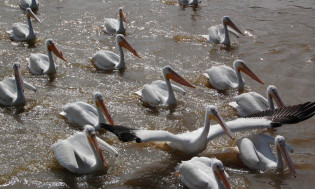
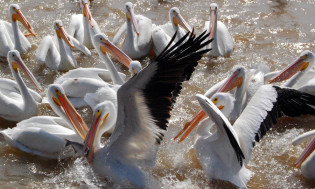
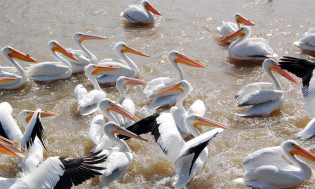















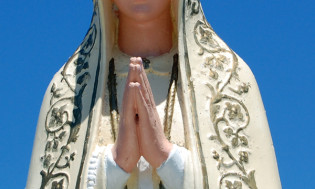




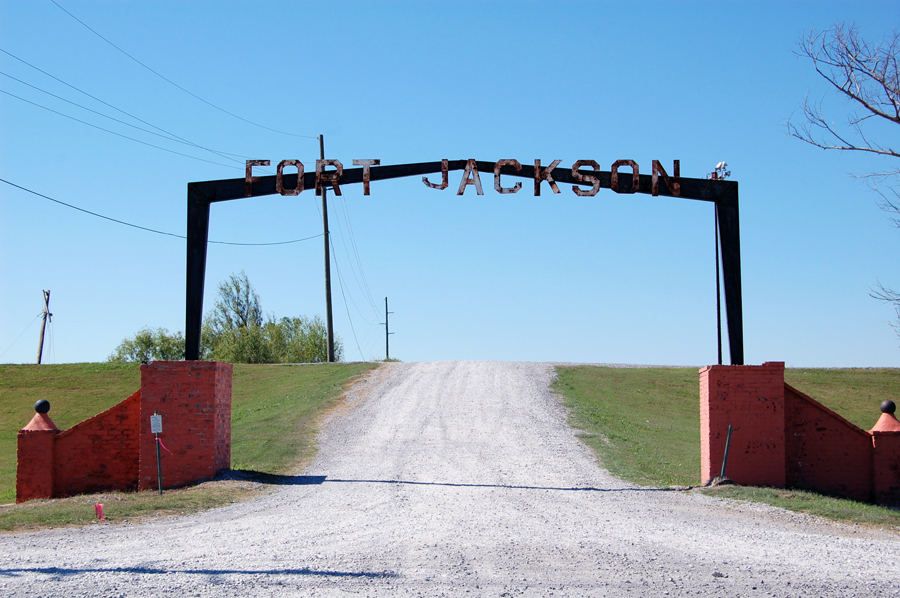

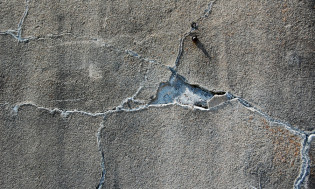


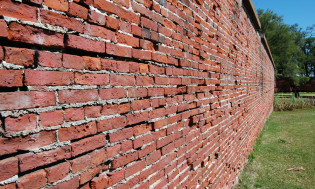

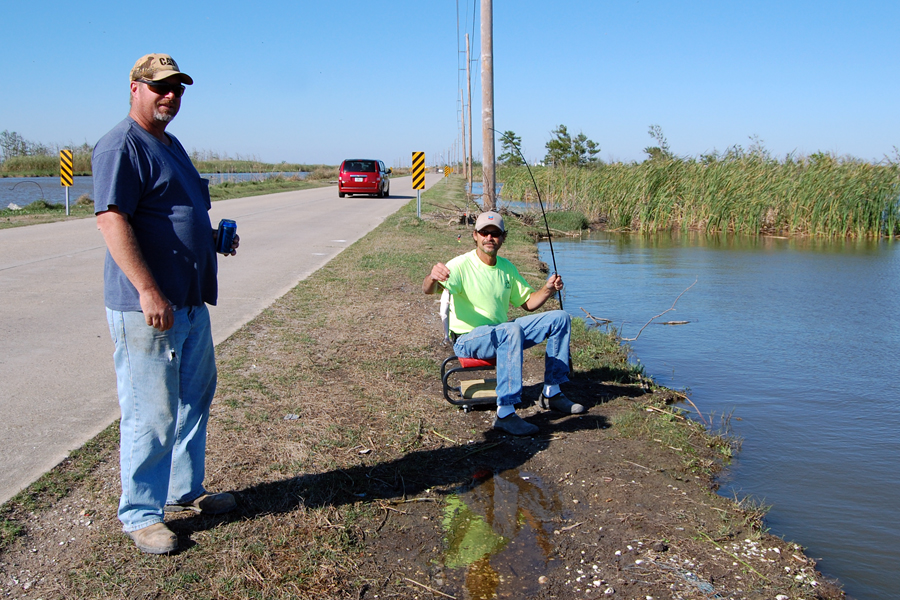
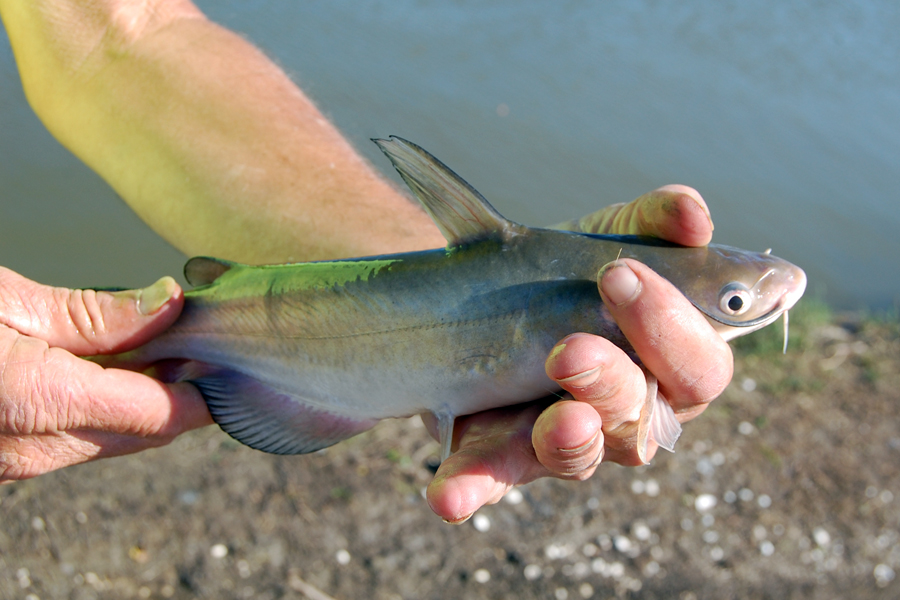
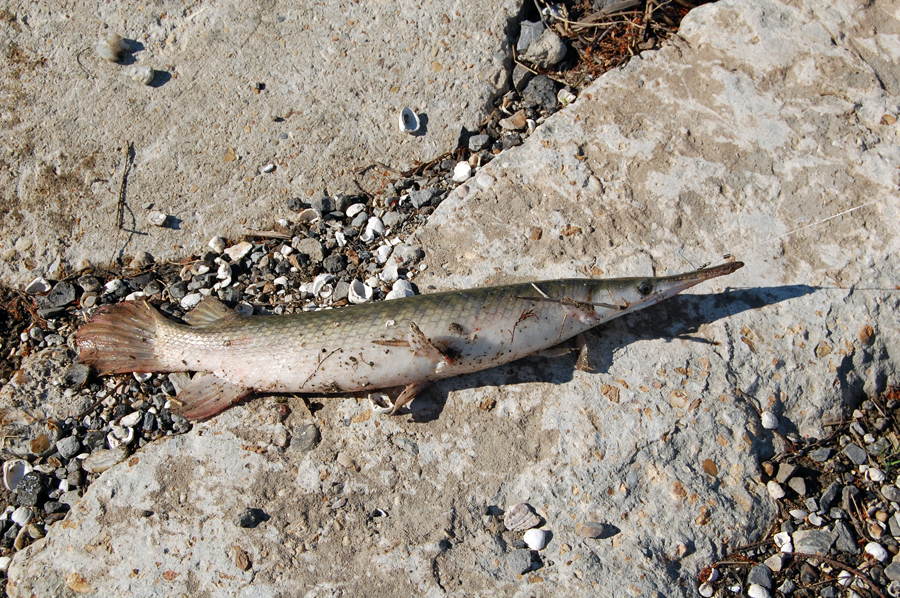


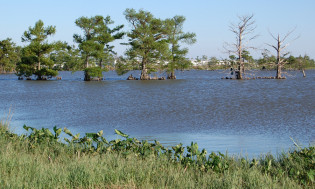
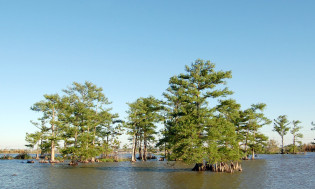
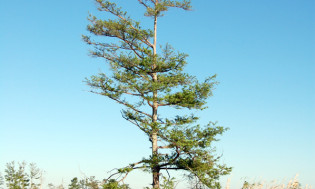


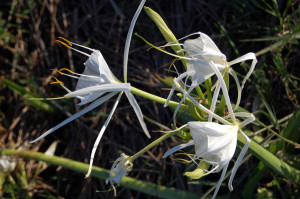
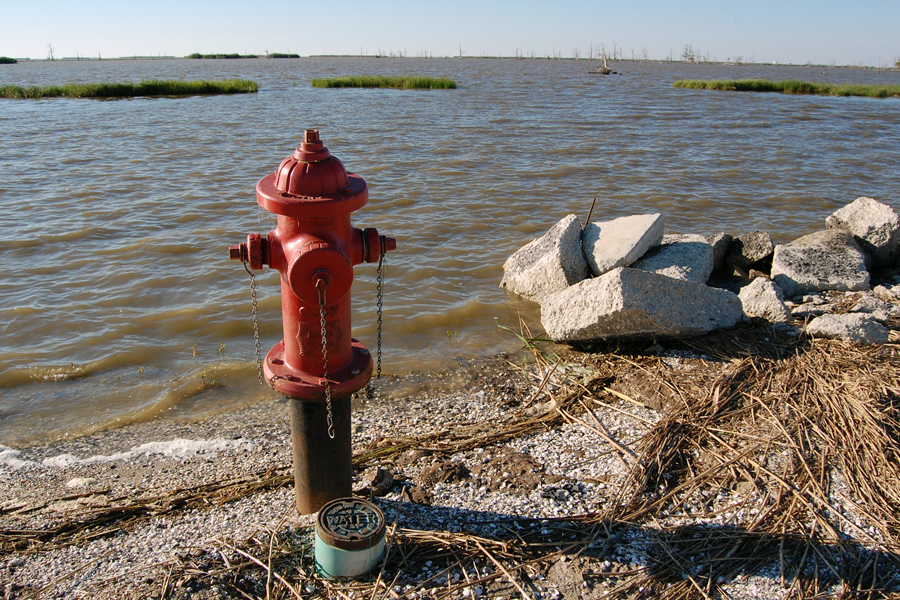

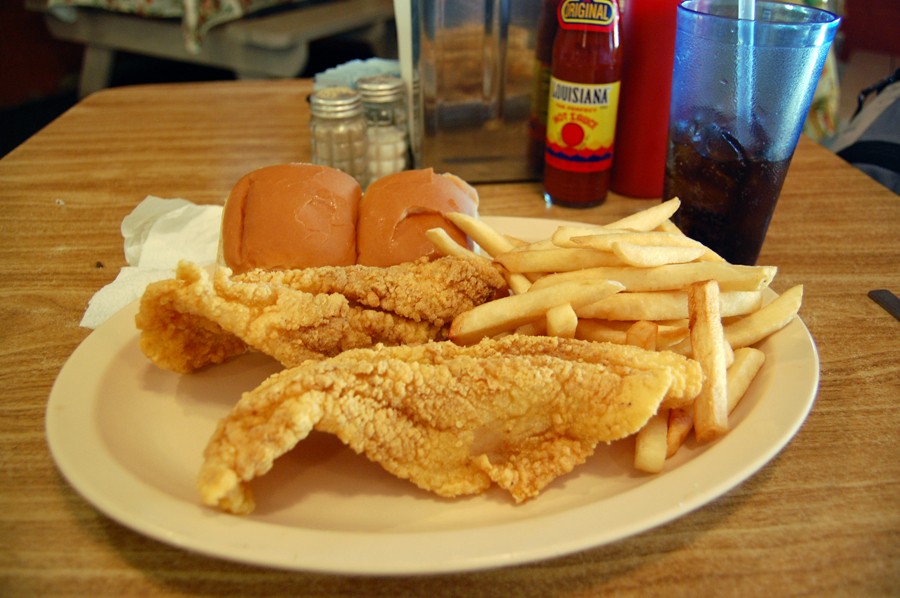
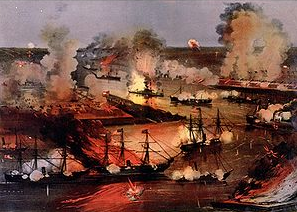

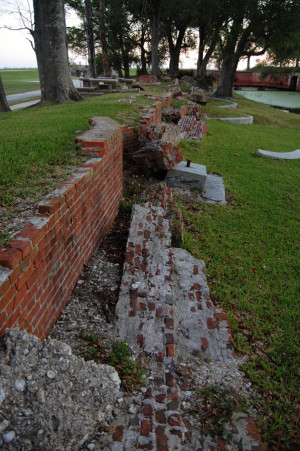

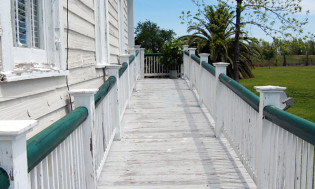
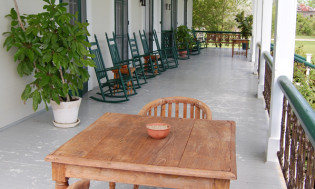
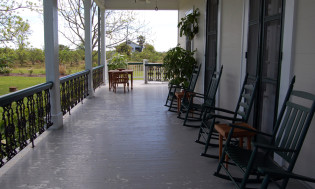



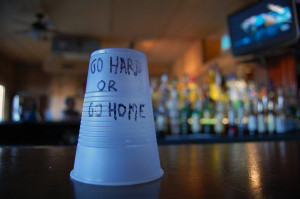
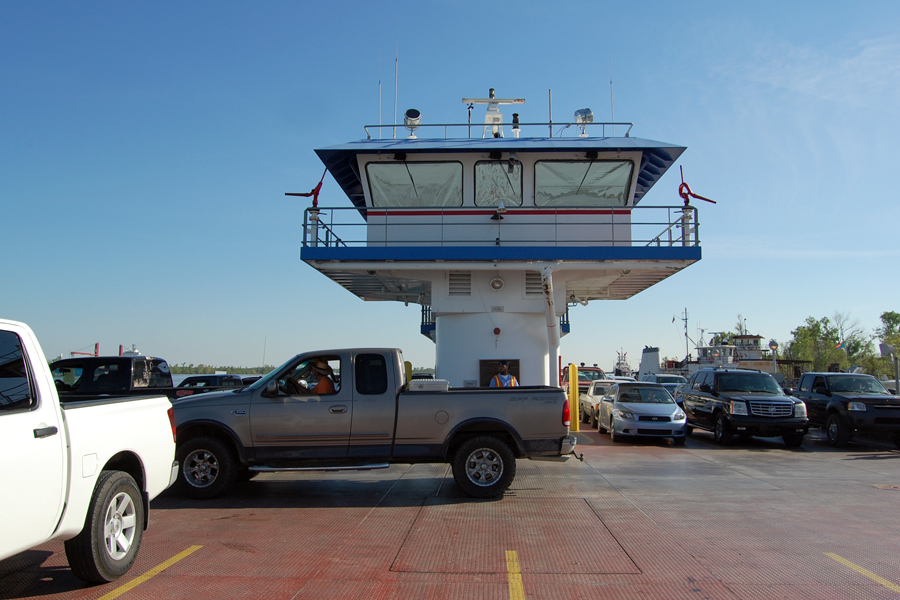
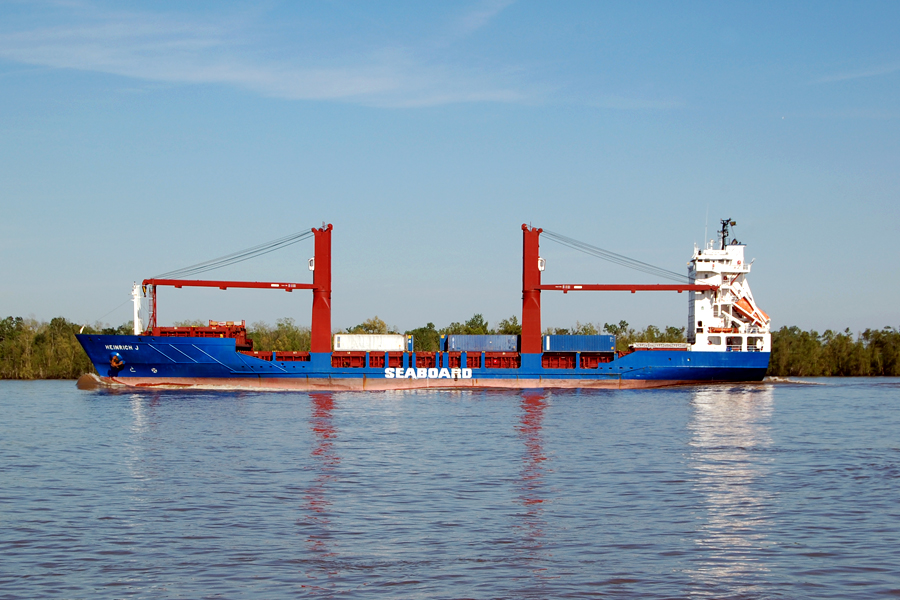

Thank you for this entry! We decided to take this trip, on a whim, and did it in four days instead of two (December 2017). Reading your entry let us know that it was, indeed, possible. No hassles with the cops (a couple on bikes is a little less suspect in the eyes of those who would profile) but a lot of fun. We hopped over the levee every night to sleep under the trees to the baritones of riverboats. Enjoyed your commentary!
Jeremy and Elise
Awesome! Glad the info on Slices of America helped your trip. I would love to see pictures and would gladly post them if you’re interested. It’s OK that the same trip occurs more than once on the site. Just let me know-and safe travels!
Hello – glad I stumbled upon this. My boyfriend and I are planning on completing this same bicycle journey from NOLA in the coming weeks..Things change in a span of 10 years but seems like there’s a decent shoulder to cycle on – what did you think about the road conditions? Is this a ride you’d recommend? I appreciate your help and that you posted this!
Joanne and Ben
Hi! Sorry, my site was hacked and I missed this message. Did you take the trip? If so, how did it go?